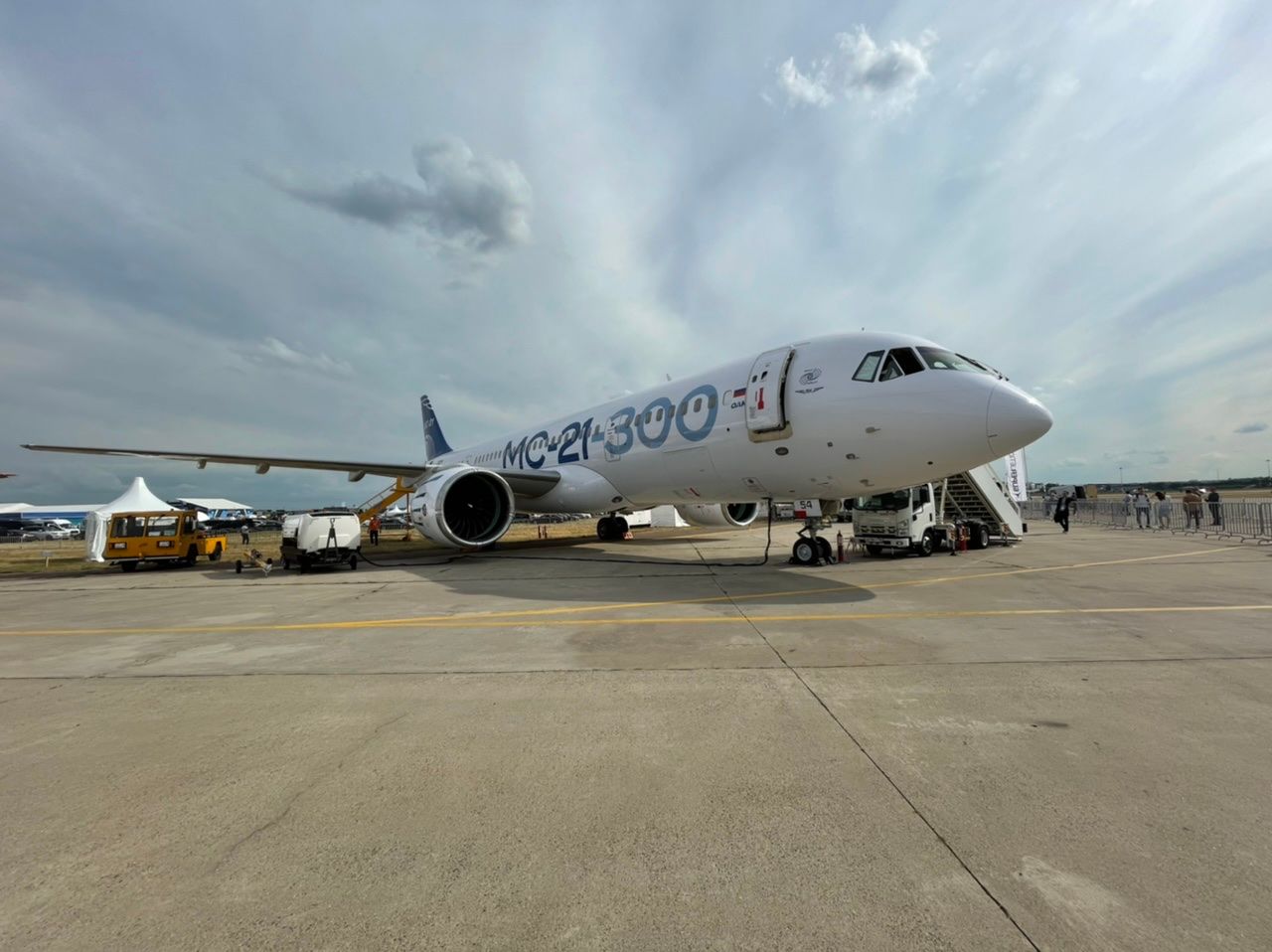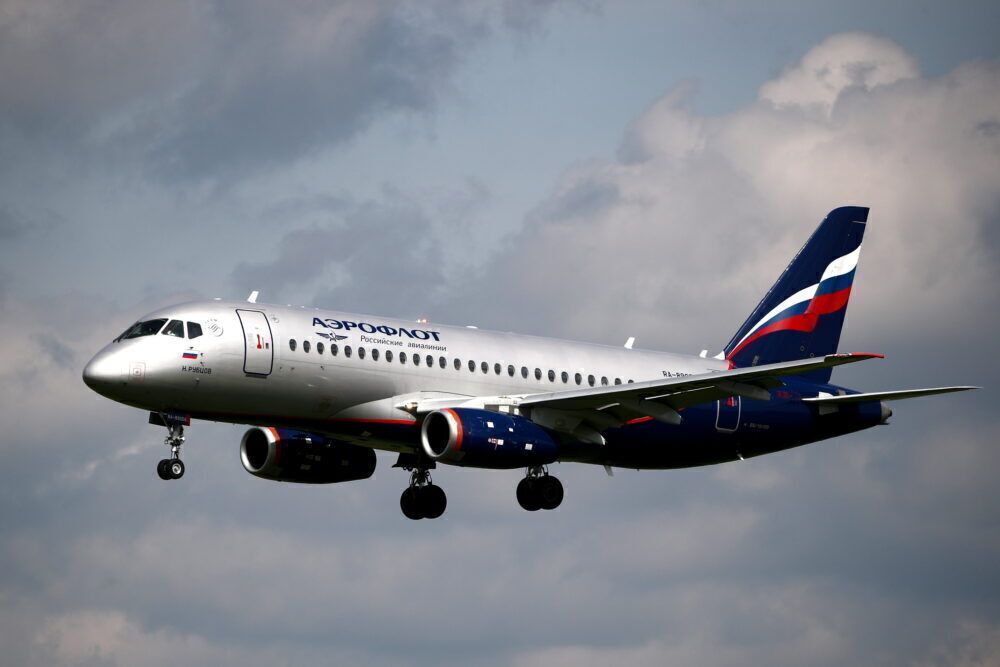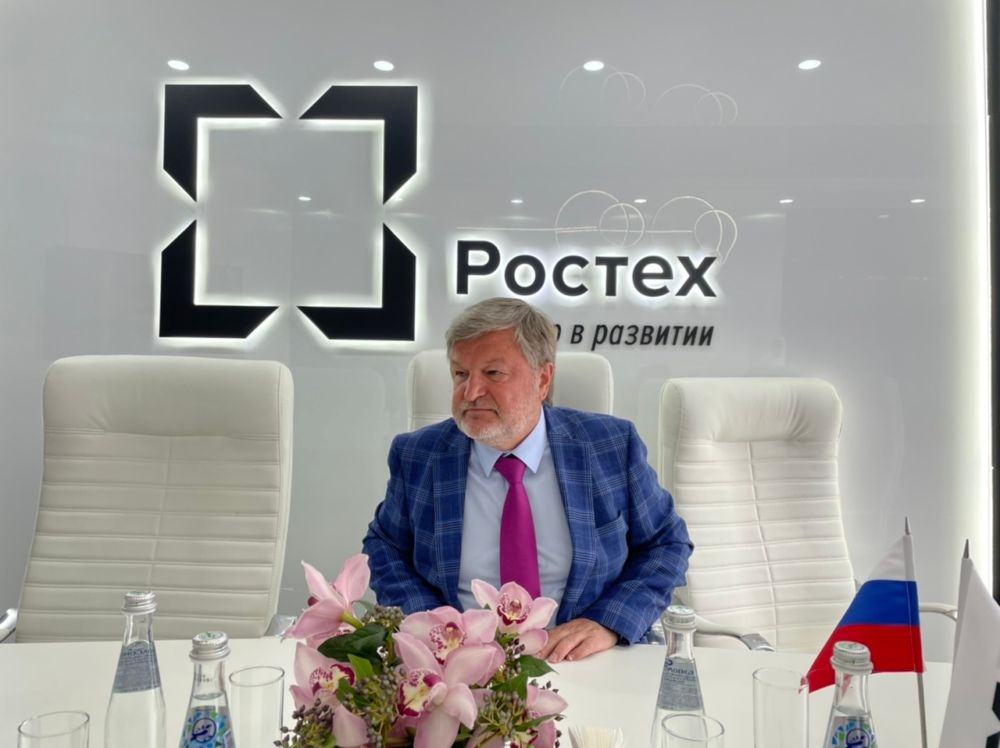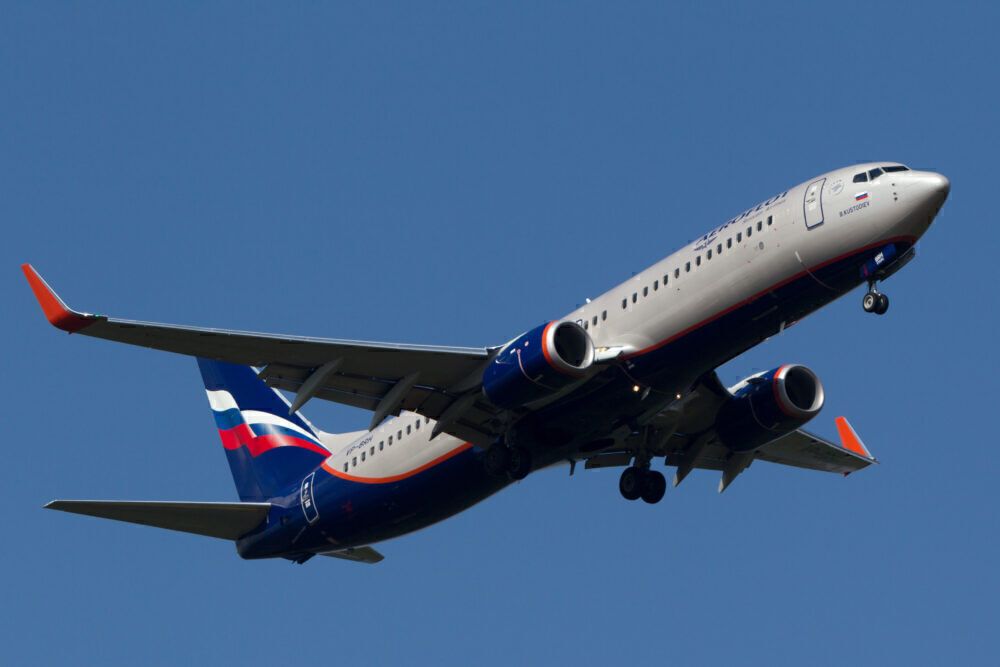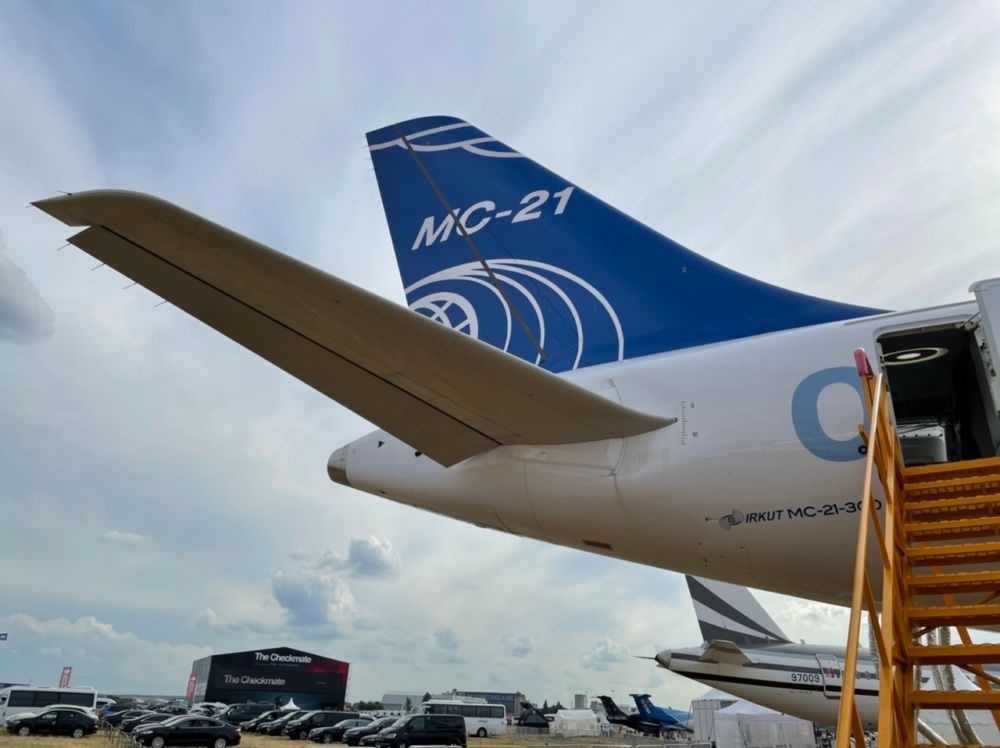While local aircraft can be spotted all across Russia, several major airlines hold a mix of national and foreign planes in their fleets. In an exclusive interview with Simple Flying this week, Viktor Kladov, Director for International Cooperation and Regional Policy of the State Corporation Rostec, shared details of his firm’s plans to have domestic operations operated by Russian aircraft by the time this decade is over.
A foreign presence
In the same week that Azimuth Airlines confirmed that it will take delivery of Russia’s first Airbus A220, the airline signed a memorandum of understanding for 10 Superjet (SSJ-100), aircraft. Red Wings and Aurora also signed agreements outlining delivery of 25 and eight SSJs, respectively. Meanwhile, Rossiya Airlines agreed on a deal for 15 units of the type.
Russia and its airline Aeroflot are moving to import-substituted aircraft, starting with this order for 339 airliners. Photo: Getty Images
The Airbus A220-300 has the potential to be a great fit for Russia with the numerous short and medium-haul routes across the country. Therefore, there are exciting prospects on the cards amid the upcoming delivery of the type to a Russian airline.
Yet, there initially seemed to be a mixed message about the priorities of airlines amid the agreement for Russian and non-Russian narrowbodies in the same week. Moreover, with the A220-300 being such a fresh model, where does it fit in with the Russian market’s long-term goals?
A time and a place
We asked Mr Kladov his thoughts about airlines recently adding aircraft not from Russia into their fleets. He highlighted that the size and applications of these planes are different. He expressed that the majority of these aircraft from Airbus and Boeing are used for longer distances. Rostec’s offerings are primarily for medium distances.
Altogether, even though the Irkut MC-21 is the aircraft grabbing all the attention, it will be backed by two other key Russian commercial aircraft. The SSJ is undergoing a revamp as the Sukhoi Superjet New, which will have Western parts replaced with localized components in the coming years. Meanwhile, Rostec‘s Il-114-300 turboprop performed its first flight at the end of last year.
“By the end of the decade, we will have the MC-21 replacing Airbus and Boeing from the domestic markets and we'll sell it internationally,” Kladov told Simple Flying
“We are a huge country in terms of territory, we cannot sustain development on imported aircraft. The latest one is the Il-114-300. We will start producing this aircraft in two years time. It will supply demand for the local airlines.”
Stay informed: Sign up for our daily and weekly aviation news digests.
Revisit strategies?
In the long-haul realm, the approach is clear. Aeroflot’s recent A350 deliveries mark an ongoing relationship between the airline and Airbus, with the widebody set to be a mainstay for international operations amid its great balance of economics and comfort.
The plan when it comes to the narrowbodies may be more tactical. This year, Aeroflot took delivery of its first Airbus A320neo in May. Since this model joined, it has been serving Russian cities. However, Aeroflot is notably the launch customer of the MC-21. So, when the Russian build enters service from next year, the flag carrier of the country may consider rethinking its fleet application across its network when it comes to its Airbus A320 and Boeing 737 family aircraft.
Meanwhile, even though we can expect to see Azimuth’s A220’s flying in at several Russian airports, they won’t only be useful on domestic trips. Russia’s location on the map will allow the aircraft to easily carry passengers to European and Middle Eastern destinations. It’s also important to note the regularly scheduled operations to fellow members of the Commonwealth of Independent States will also play a major role.
Additionally, these A220s will be on lease from ALC. Therefore, the carrier could still adapt by the time this decade is over.
Up to scratch
Ultimately, Russian domestic aircraft are being modernized for the present day. There is an increasing demand for such planes in the current market.
“The fleets of Russian airlines are being brought up to date properly with domestically produced aircraft,” the Minister of Industry and Trade of the Russian Federation Denis Manturov shared at MAKS-2021.
“According to a Russian public opinion research center VCIOM poll, there is clear demand among passengers to expand the route network in Russia bypassing Moscow, and SSJ-100 has the optimal characteristic for this task."
UAC General Director Yury Slyusar added that over the last couple of years, SSJ aircraft have opened over 200 new routes between Russian airports. Overall, his company is glad that its planes are contributing to the increased connectivity in his country.
A diverse market
Overall, along with the grand airports at the likes of Moscow and St. Petersburg, there are numerous smaller sites dotted around the whole of the country. UAC explained to Simple Flying that many of these spots are just basic airfields, and are often being operated at with aging aircraft. However, with the new domestic aircraft being able to operate at shorter runways, passengers traveling through these fields will have up-to-date options.
So, the MC-21 will join forces with the Sukhoi Superjet and Il-114-300 this decade. Russia is keen for these aircraft to align and lead domestic operations across Russia.
What are your thoughts on the plans for Russia’s domestic aviation industry? What do you make of the overall targets? Let us know what you think of the prospects in the comment section.

